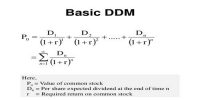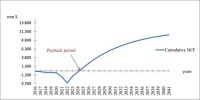Holding Inventory is the Inventory helps the organization to prevent fluctuations in demand & supply from affecting sales or production. The main objective of holding inventories is to reduce the cost associated with investment in inventory and maintaining efficiency in production and sales operations.
A company has various motives for holding the inventory as stated below:
(a) Transaction Motive: The Company may be required to hold the inventory in order to facilitate the smooth and uninterrupted production and sale operations. It may not be possible for the company to procure the raw material whenever necessary. There may be a time lag between the demand for the material and its supply. Hence it is needed to hold the raw material inventory. Similarly, it may not be possible to produce the goods immediately after they are demanded by the customers. Hence it is needed to hold the finished goods inventory. They need to hold work in progress may arise due to the production cycle.
(b) Precaution Motive: In addition to the requirement to hold the inventory for routine transactions, the company may like to hold them to guard against the risk of unpredictable changes in demand and supply forces. E.g., the supply of raw material may get delayed due to factors like a strike, transport, disruption, short supply, lengthy processes involved in the import of raw material etc. hence the company should maintain sufficient level of inventory to take care of such situations. Similarly, the demand for finished goods may suddenly increase (especially in case of the seasonal type of products) and if the company is unable to supply them, it may mean gain of competition. Hence, the company will like to maintain a sufficient supply of finished goods.
(c) Speculative Motive: The Company may like to purchase and stock the inventory in the quantity which is more than needed for production and sales purpose. This may be with the intention to get an advantage in term of quantity discounts connected with bulk purchasing or anticipating price rise.
Inventory management is primarily about specifying the size and placement of stocked goods. Inventory management is required at different locations within a facility or within multiple locations of a supply network to protect the regular and planned course of production against the random disturbance of running out of materials or goods.
The scope of inventory management also concerns the fine lines between replenishment lead time, carrying costs of inventory, asset management, inventory forecasting, inventory valuation, inventory visibility, future inventory price forecasting, physical inventory, available physical space for inventory, quality management, replenishment, returns, and defective goods and demand forecasting. Balancing these competing requirements leads to optimize inventory levels, which is an on-going process as the business needs shift and react to the wider environment.
















